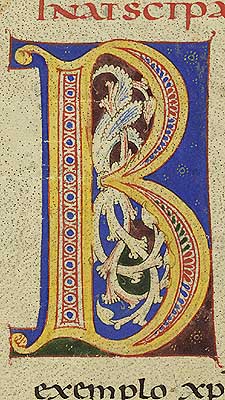
Letterforms
![]()
Medieval scribes seldom bothered to record when and where they copied
a given manuscript. Modern scholars must often rely on paleography–the
study of handwriting–to determine a manuscript’s age and its
place of origin. The key to this determination is an awareness of regional
variations in handwriting and the changes that took place in the script
of a given region over time. Paleographers have established the basic
historical characteristics of medieval handwriting by carefully examining
the few dated and localized examples available.

Copyright
© 2002 Division of Rare & Manuscript
Collections
2B Carl A. Kroch Library, Cornell University, Ithaca, NY, 14853
Phone Number: (607) 255-3530. Fax Number: (607) 255-9524
For
reference questions, send mail to:
rareref@cornell.edu
If you have questions or comments about the site, send mail to: webmaster.